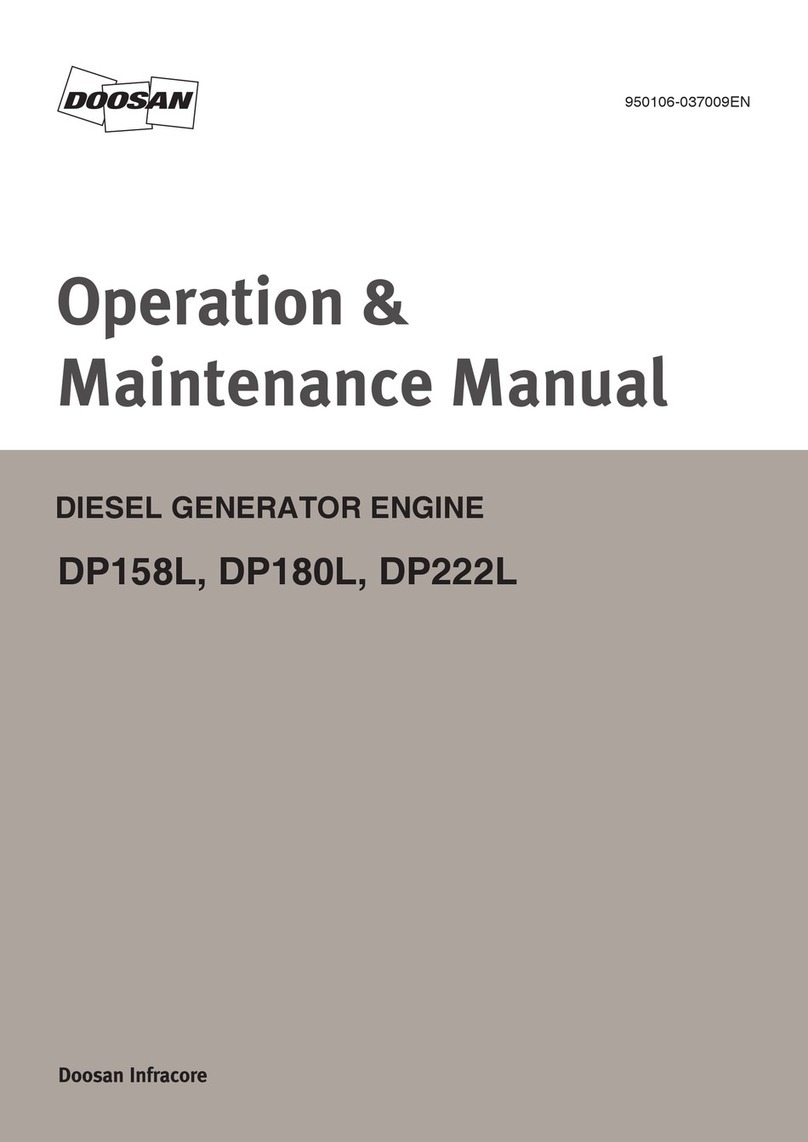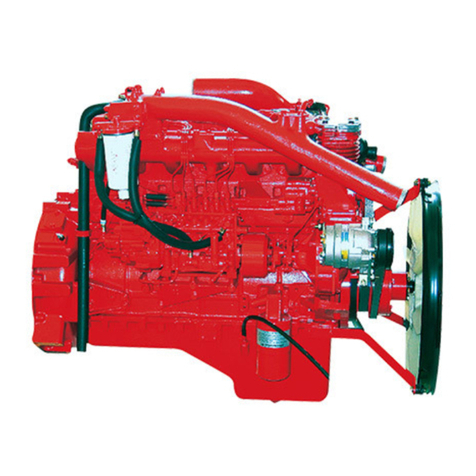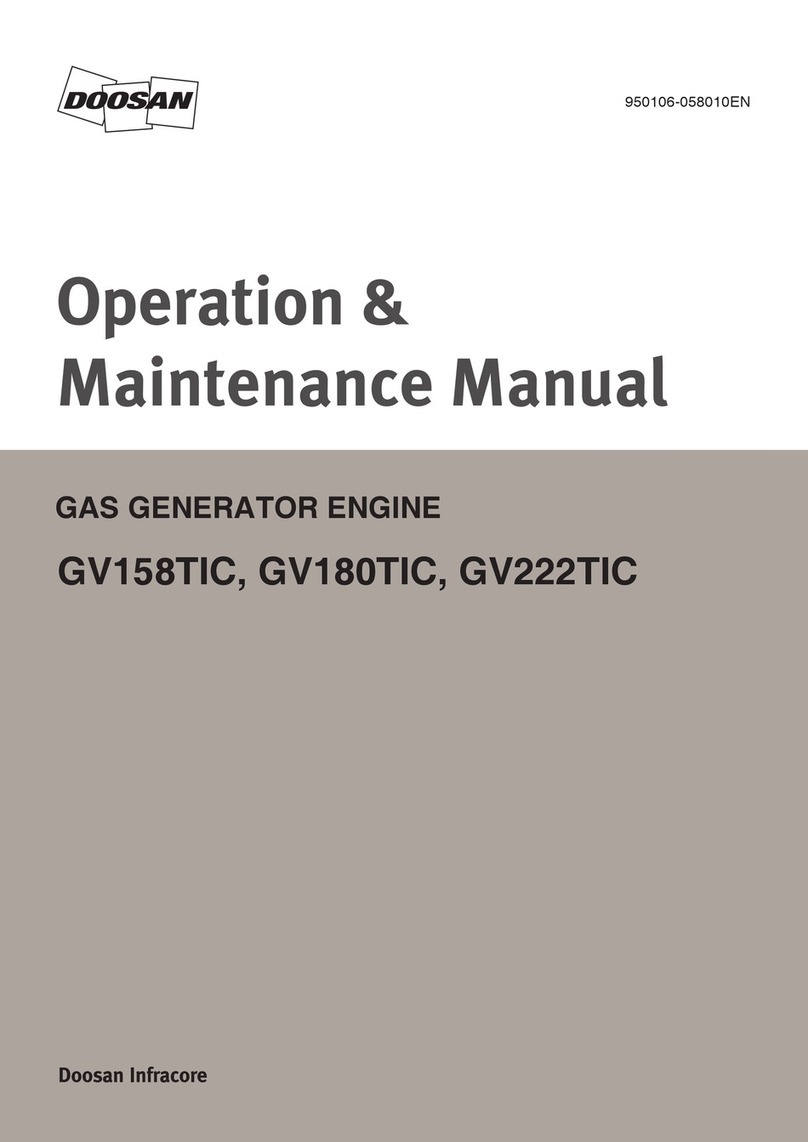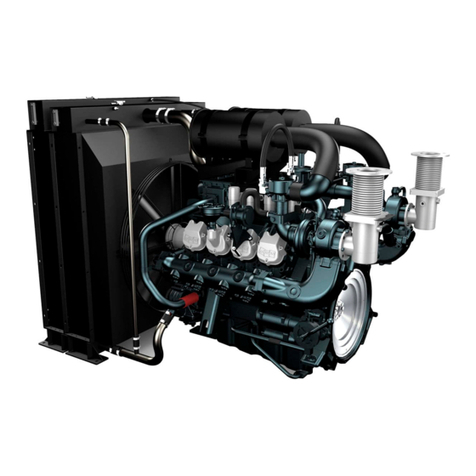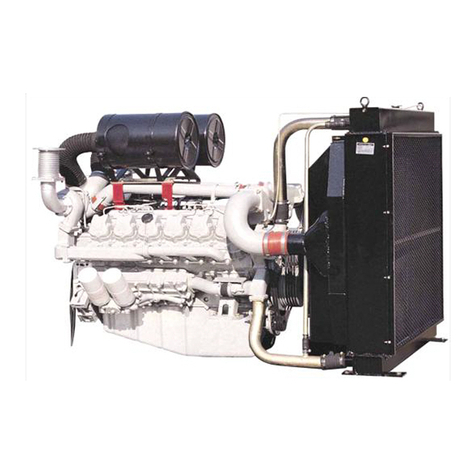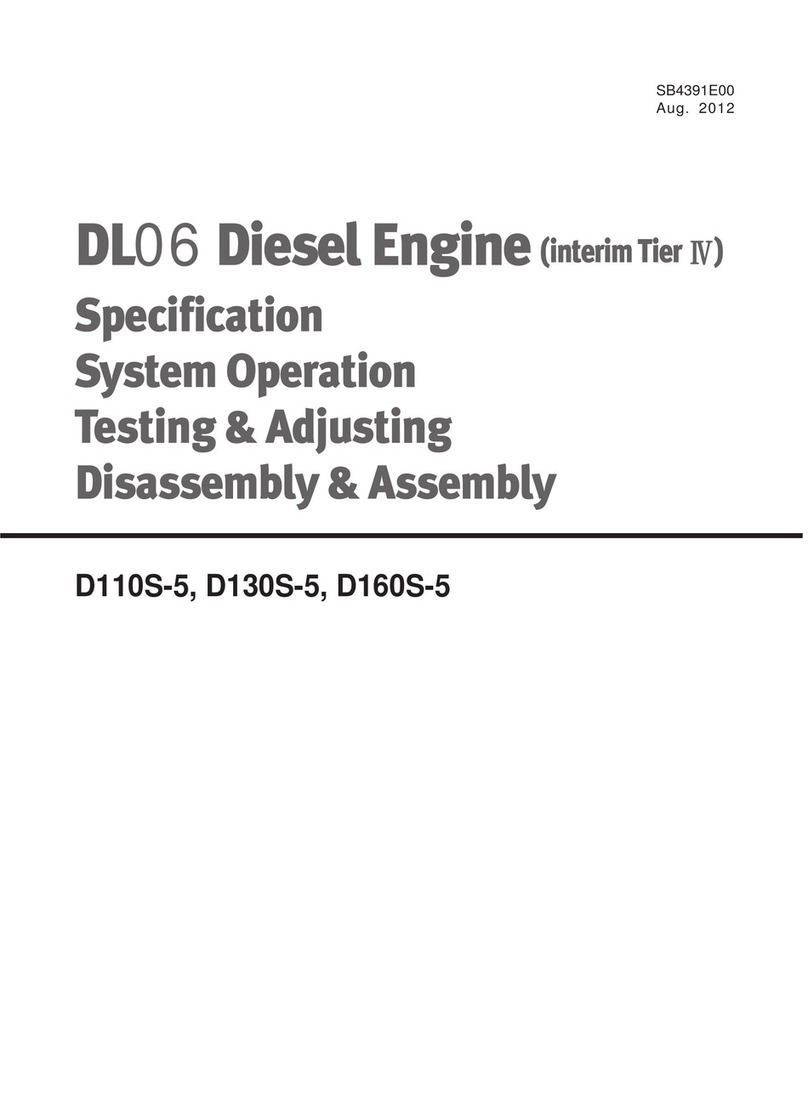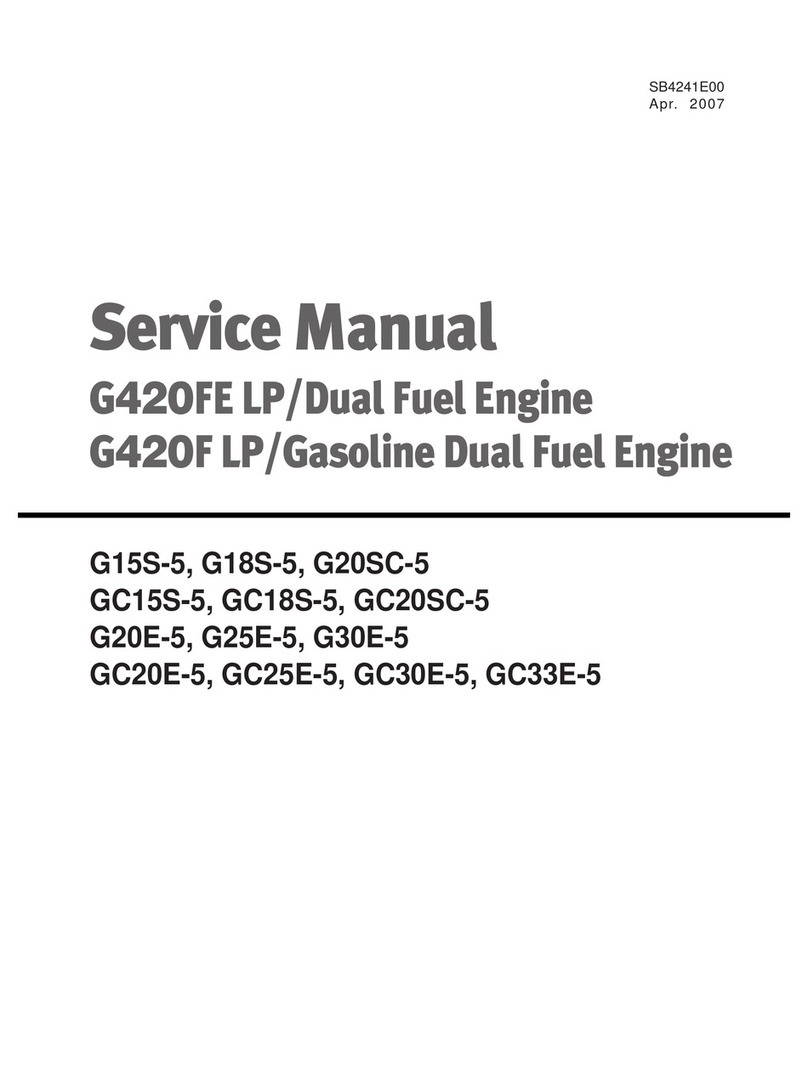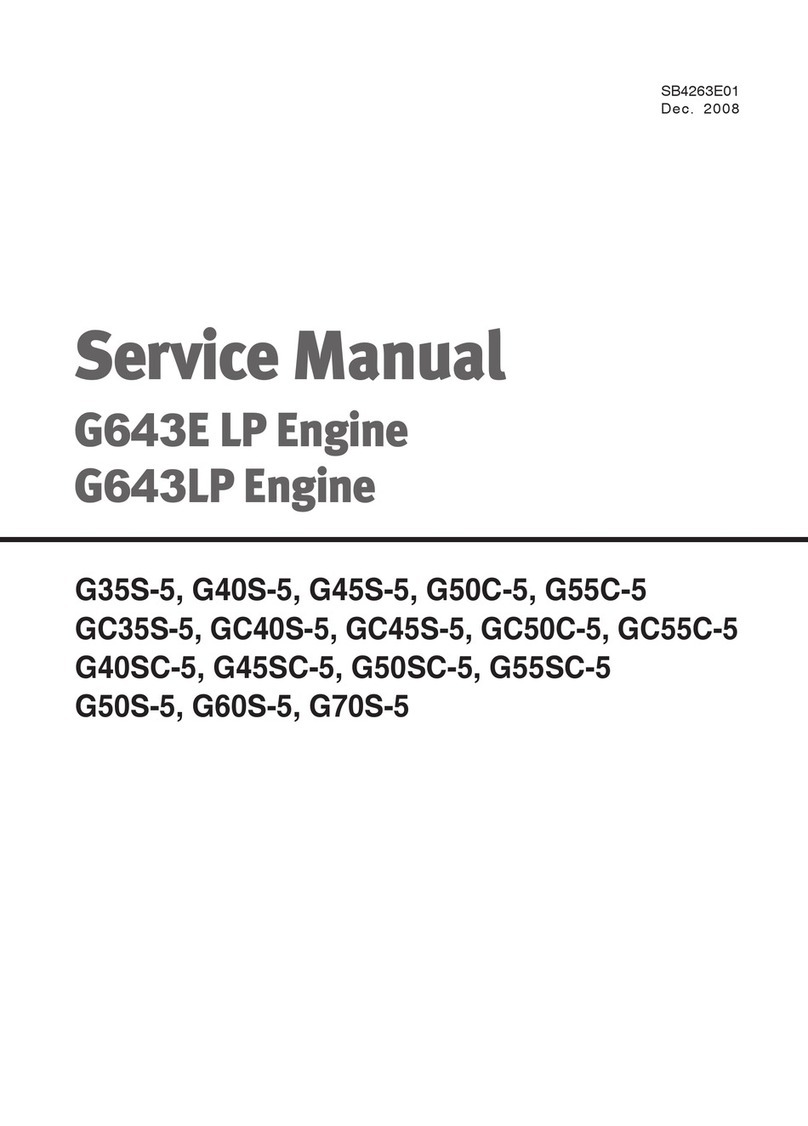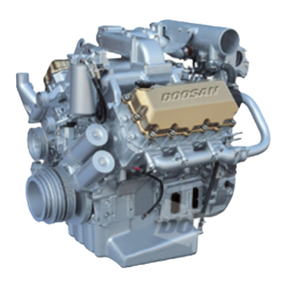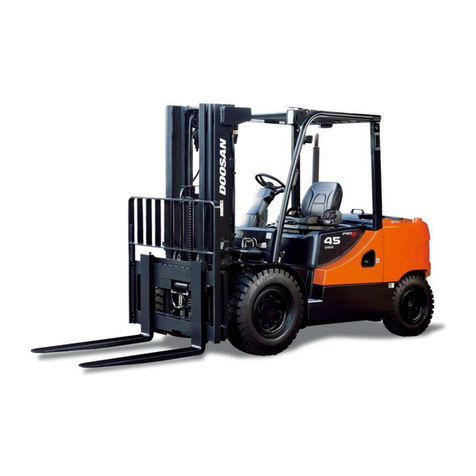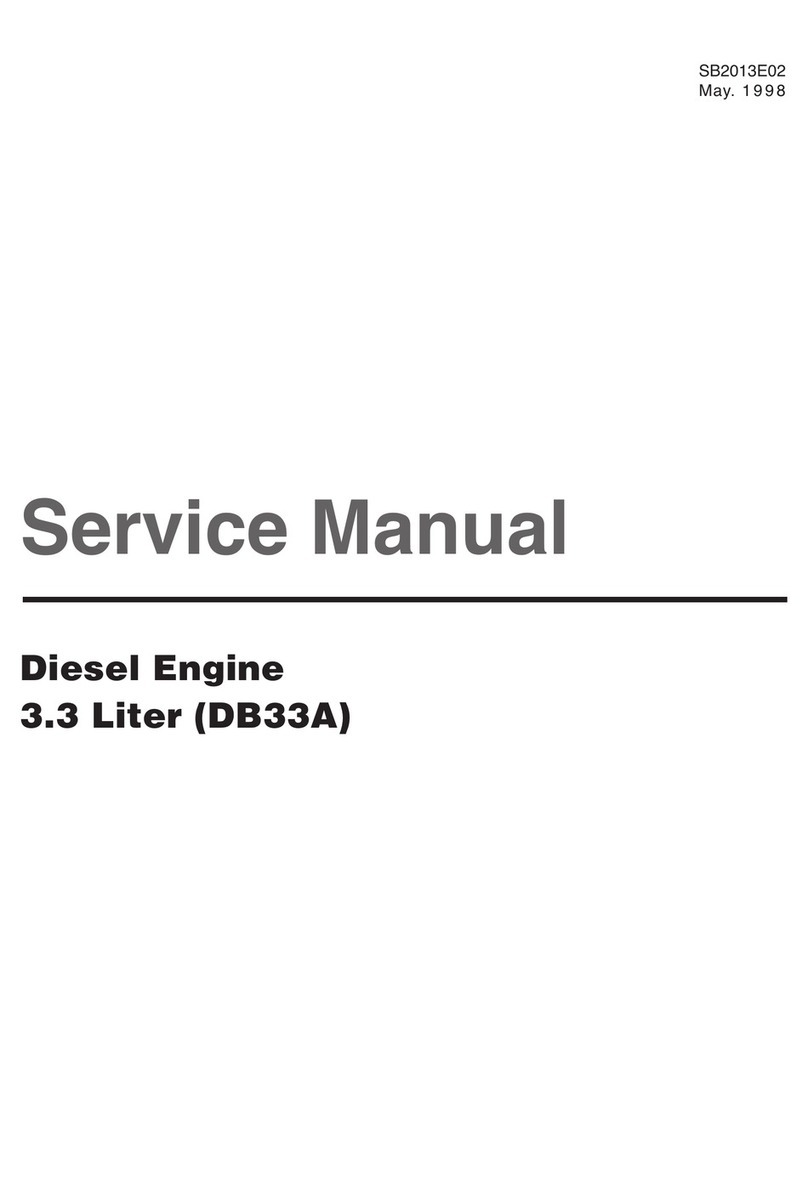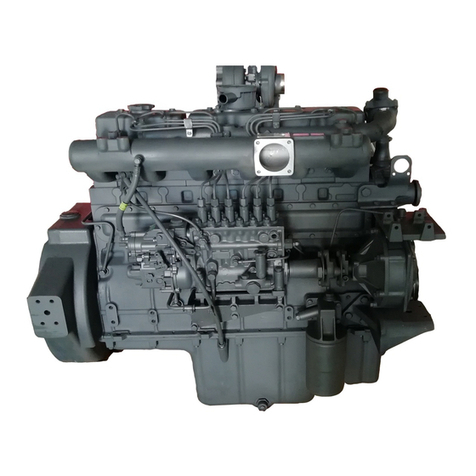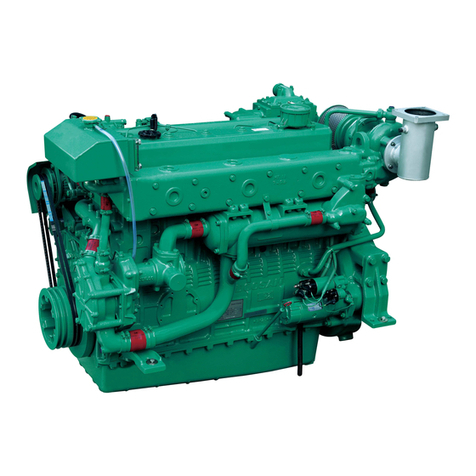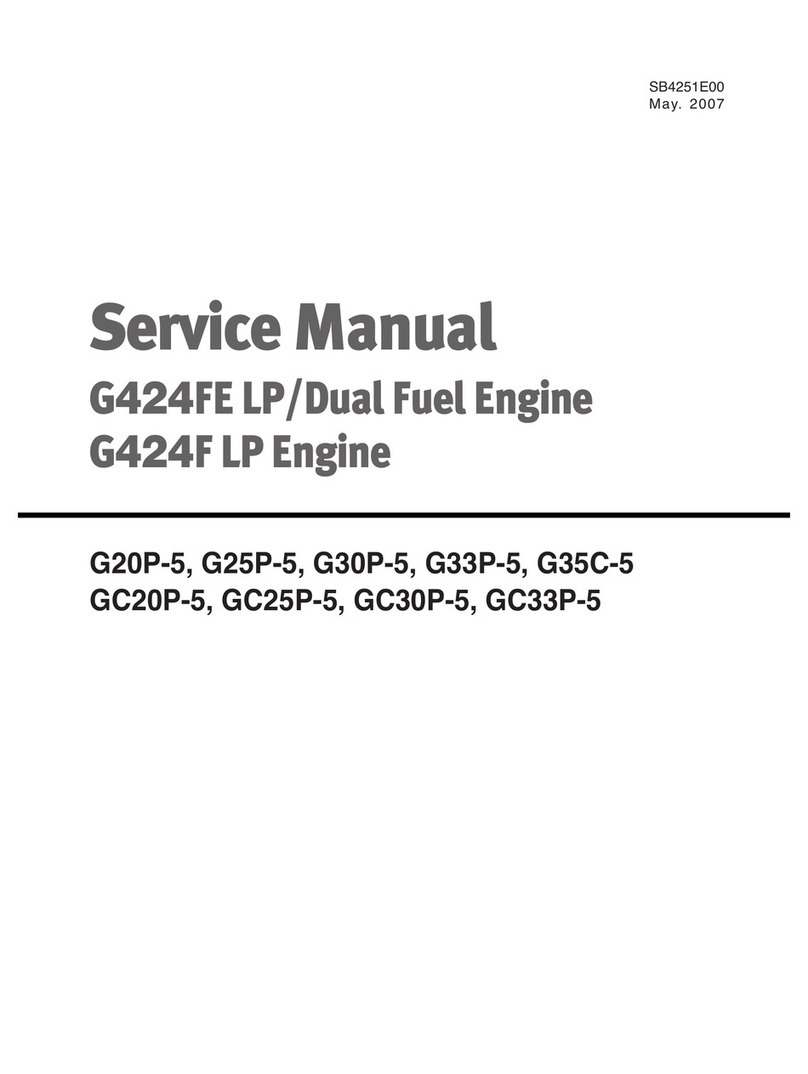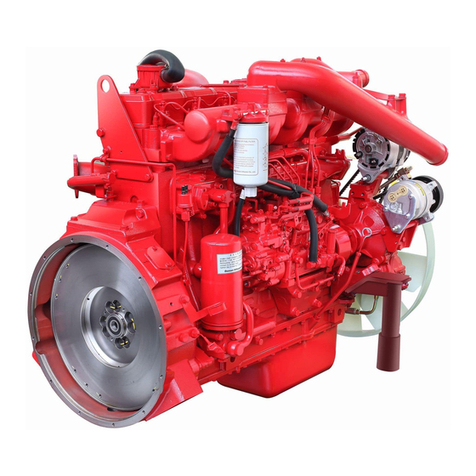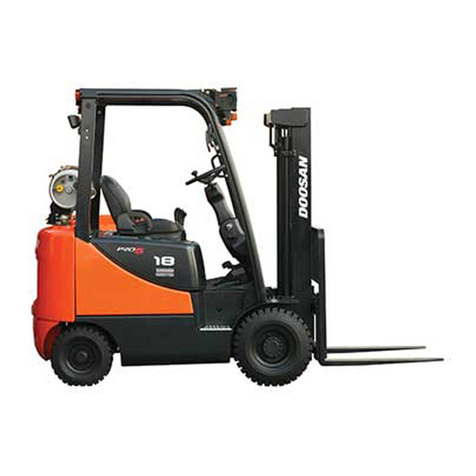
1. Introduction
4
Danger, Warning, Caution, and Notes
General Information
Instructions which require absolute compliance while
performing the inspection, service and troubleshooting
procedures provided in this Operation and Maintenance
Manual are classified more specifically as 'Danger,'
'Warning' and 'Caution' items. In addition, Note) is used to
provide additional descriptions and information required for
maintenance technicians to successfully operate our
engines. Complying with the proper service methods and
'Danger,' 'Warning' and 'Caution' items recommended by
Hyundai Doosan Infracore can both enhance the
effectiveness of engine maintenance and prevent physical
injuries to workers. However, not every possible danger can
be anticipated.
Note) Additional descriptions, information, and references
are provided for ease of understanding.
Make sure to comply with these instructions; failure to
do so may result in life-threatening physical injuries to
workers and/or people around the engine.
Make sure to comply with these instructions; failure to
do so may result either in physical injuries to workers
and/or people around the engine or severe environ-
mental pollution.
Make sure to comply with these instructions; failure to
do so may result in severe faults in engine performance
and operation.
Safety sign Reference Location
Fan
Operation &
Maintenance manual
V-belt
Turbocharger
Exhaust manifold
(Heat screen)
Emergency stop
device
• While running the engine, be careful not to touch the
safety guard on the cooling fan. Otherwise, the spin-
ning cooling fan may cause severe injury, such as
severing fingers.
• While running the engine, be careful not to touch the
safety guard on the V-belt. Otherwise, the spinning
V-belt may cause severe injury, such as severing
fingers.
• The V-belt safety guard is an optional item for
customers. The V-belt safety guard must be installed
in order to prevent accidents. In the event that the
V-belt safety guard is not installed, do not approach
the engine while it is running. Hyundai Doosan Infra-
core is not responsible for accidents or injuries
which occur without the V-belt safety guard installed.
• Be careful not to touch the turbocharger components
immediately after stopping the engine or while the
engine is running. Otherwise, the heated turbo-
charger may cause severe injury. In the event that a
heated turbocharger must be handled for the sake of
maintenance or repairs, wait for the turbocharger to
cool sufficiently before handling it.
• Be careful not to touch the exhaust manifold or heat
shield components immediately after stopping the
engine or while the engine is running. Otherwise, this
may cause severe injury. The heat shield installed on
the exhaust manifold becomes especially hot, so
take care not to touch it.
• In the event that emergency engine maintenance
must be performed, use the mechanism installed on
the generator first. It may be difficult to operate the
'manual emergency stop device' installed on the fuel
pump, and touching the exhaust manifold may cause
severe injury. Hence, use the 'manual emergency
stop device' after installing a separate auxiliary
cable. Hyundai Doosan Infracore is not responsible
for accidents or injuries which occur without a sepa-
rate auxiliary cable installed.
